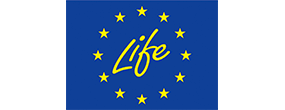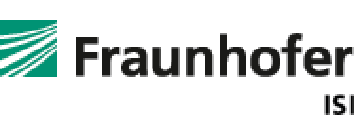Overview
In 2022 total final energy consumption was 5.8% lower than in 2000 (normal climate). Residential sector is the biggest consumption sector in Denmark and the consumption in 2022 is almost at the same level as in 2000 (4.14 Mtoe compared to 4.23 Mtoe). Transport sector (excl. international air transport) is the second largest sector and its consumption has very slightly decreased (from 4.07 Mtoe in 2000 to 4.02 Mtoe in 2022). The energy consumption in the service sector has increased from 1.87 Mtoe in 2000 to 1.99 Mtoe in 2022. The industry sector has decreased by 17%, from 3.01 Mtoe in 2000 to 2.49 Mtoe in 2022.
Figure 1: Final energy consumption by sector (with climatic corrections)
Source: ODYSSEEEnergy efficiency of final consumers, as shown by ODEX, improved by an average of 1.1%/year from 2000 to 2022 (or 22% in total). Most improvement has been registered in industry (1.9%/year or 35% in total) and residential (1.1%/year or 21% in total).
Figure 2: Technical Energy Efficiency Index
Source: ODYSSEEThe Danish government has a clear ambition: Denmark is to be climate neutral by 2045. A key element in fulfilling this target is energy efficiency along with an increased use of renewable energy.
Table 1: Sample of cross-cutting measures
| Measures | NECP measures | Description | Expected savings, impact evaluation | More information available |
|---|---|---|---|---|
| Establishment of a green fund | No | Through a number of major climate agreements, the government, in cooperation with a broad majority in the Norwegian Parliament, has decided on a number of major investments in Denmark's green transition. These investments contribute to Denmark becoming greener year after year and moving closer to the realization of the climate goals at the same time that Denmark is a green pioneering country. On this basis, the government and the parties to the agreement agree to continue to strengthen the work with the green transition and that further investments are necessary. [Danish title: Etablering af grøn fond] | 0.55 TJ | Link |
| Climate agreement on green electricity and heat 2022 - A greener and safer Denmark | No | Denmark and Europe needs to be safer and greener. This requires a significant expansion of renewable energy sources – both towards 2030 and in the years after. Solar parks and onshore wind turbines can deliver cheap, green energy quickly in the years leading up to 2030. At the same time, Denmark's large sea areas, with good wind and seabed conditions, provide ideal conditions for harvesting the sea wind and profits in the North Sea in the future as well, and the Danish waters have the potential to become a green power plant not just for Denmark, but also for Europe. There is also described initiatives directly related to energy efficiency. See "General description". [Danish title: Klimaaftale om grøn strøm og varme 2022 - Et grønnere og sikrere Danmark - Danmark kan mere II] | 2.73 TJ | Link |
| Danish Energy Agreement 2018 | No | The government, together with all parliamentary parties, entered into a new energy agreement on 29 June 2018. With the agreement, the electricity consumption can be covered by renewable energy in 2030. At the same time, the agreement's financing of renewable energy sources shows the way to reach a share of renewable energy of approx. 55 pct. in 2030. | 2.73 TJ | Link |
| Public funding for energy reseatch, development and demonstration | No | Several programmes provide funding for Danish energy research and development and demonstration: The Energy Technology Development and Demonstration Programme (EUDP) was established during 2007. The programme was established by law in June 2007 and in September 2007 the EUDP Board was appointed by the Minister. A new Board was appointed in 2011. The Board is authorised to decide which projects are to receive support. In December 2007 the programme was approved by the EU Commission and the programme was initiated in January 2008. The programme is administered by a secretariat supplied by the Danish Energy Agency. The Secretariat is referring to the Board. In accordance with the Energy Agreement of February 2008 the Danish Government increased Danish public funds for energy R&D&D to 1 billion Danish Kr. (DKK) pr. year from 2010. According to the later Energy Agreement of March 2012 this level of public funding has been continued. The funding is provided by a number of programs, including the PSO (public service obligation) programme for environmentally friendly production of electricity with 130 mio. DKK pr. year. The activities of this programme include support for projects developing fuel cells, PV, use of biomass, wave energy etc. Furthermore, funding for energy R&D&D in the years to follow has been provided by EUDP (Energy Technology Development and Demonstration Programme) and the Strategic Research Council. Also, in 2010 a new 3 year programme, Green Labs DK, for energy test facilities was established, the program also being administered by the EUDP board. Green Labs DK has not been continued in 2013. | Link | |
| No |
Buildings
The energy consumption for households’ space heating per m2, including climatic corrections, has decreased by an average of 0.9% per year over 2000-2022 from 8.93 to 7.37 koe/m2, a total decrease of 17%. Energy consumption for households per dwelling, other than space heating, has also decreased, especially for water heating (21% from 2000 to 2022), followed by electrical appliances and lighting (20%).
Figure 3: Energy consumption of household space heating per m2 (with climatic corrections)
Source: ODYSSEEFigure 4: Energy consumption per dwelling by end-use (except space heating)
Source: ODYSSEEEnergy consumption for households has decreased by 3.6% over the period 2000-2022. Two main drivers contributed to increase the energy consumption: more dwellings and larger homes. On the other hand, energy savings are the largest contributor to the decrease in the households' energy consumption.
Figure 5: Main drivers of the energy consumption variation in households
Source: ODYSSEE; ambient heat included.Energy consumption and electricity consumption per m2 in services has decreased by 25% and 30% respectively from 2000 to 2022. Both electricity and total energy consumption per m2 was quite stable until 2008, then decreased. In 2022, energy consumption and electricity consumption per m2 in services is 1,3% and 3,7% lower than in 2019.
Figure 6: Energy and electricity consumption per m² in services (with climatic corrections)
Source: ODYSSEEThe policies and measures to promote energy efficiency in buildings are a combination of economic incentives (Making it easier for homeowners to renovate their homes, implementation of scheme to replace oil boilers with heat pumps in areas without access to district heating or access to gas grid), and regulation (as energy requirements for new buildings, Danish certification system of energy performances of buildings, and requirements and labelling of energy-related products). Furthermore, a part of rent in social housing goes into a fund that finances refurbishment in the buildings.
Table 2: Sample of policies and measures implemented in the building sector
| Measures | NECP measures | Description | Expected savings, impact evaluation | More information available |
|---|---|---|---|---|
| Subsidy scheme to replace oil burners with heat pumps in buildings outside the district heating and gas grids | Yes | The scheme is implemented as a subsidy scheme with the objective to replace oil boilers with heat pumps in buildings located in areas without access to district heating or the gas grid. | 0.56 TJ | Link |
| Agreement on green refurbishment of social housing | No | Part of the rent payed by tenants in social housing goes to a fund that finances refurbishment of the buildings. There is allocated 30.000.000.000 DKK during 2021-2026. | 0.56 TJ | Link |
| EU-related: Energy Performance of Buildings EPBD - Building regulations | Yes | The energy requirements for new buildings have been strengthened quite considerably the last 25 years. According to the EU’s Buildings Directive, the energy provisions must be reviewed with regular intervals which shall not be longer than five years. The latest revision of the Building Codes was in 2020 where, among other things, the energy requirements for windows and exterior doors were tightened. The building codes have also strong requirements in relation to components in existing buildings. However, there is also requirements for indoor climate, such as daylight and indoor temperatures. | 0.94 TJ | Link |
Transport
Energy consumption in transport has slightly decreased between 2000 and 2022 (1.2%). Energy consumption has decreased by 46% in domestic air transport, 26% in inland waterways transport, 3% in railway and 1% in road transport.
Figure 7: Transport energy consumption by mode
Source: ODYSSEEPassenger traffic by car represent 82% of the traffic of passengers in 2022 compared to 80% in 2000. Transport of passenger by bus decreased from 12% in 2000 to 9% in 2022 while transport of passengers by rail stays stable at 9% of the total passenger traffic.
Figure 8: Modal split of inland passenger traffic
Source: ODYSSEEThe share of road freight transport has increased from 88% in 2000 to 90% in 2022. On the opposite, the share of rail freight traffic has decreased and represents 10% of the traffic in 2022 compared to 12% in 2000.
Figure 9: Modal split of inland freight traffic
Source: ODYSSEEThe energy consumption in the transport sector has very slightly decreased since 2000 (-1.2% to 4.02 Mtoe in 2022). The main drivers for the increase are more activity (more passenger traffic). Energy savings counterbalanced the activity effect (0.67 Mtoe) and contributed to decrease the energy consumption.
Figure 10: Main drivers of the energy consumption variation in transport
Source: ODYSSEEThe policies and measures to promote energy efficiency in the transport sector are a combination of economic incentives (kilometer-based road tax for trucks, tax on gasoline, green owner fee, taxes on registration of new cars), and regulations (Energy and emission regulations for taxis, limos and healthcare transportations, green procurement of vehicles).
Table 3: Sample of policies and measures implemented in the transport sector
| Measures | NECP measures | Description | Expected savings, impact evaluation | More information available |
|---|---|---|---|---|
| Reorganization of registration tax for cars | No | The agreement includes the reorganization of the taxation scheme for cars so that users have a greater incentive to choose electric cars over conventional fossil fuel technology. | 0.72 TJ | Link |
| Kilometer-based road tax for trucks | No | In the new kilometer-based road tax system, trucks pay according to how much CO2 is emitted from driving. Green trucks therefore pay less in road tax than equivalent conventional trucks. The change will take place from 2025, so truckers and others will be given the opportunity to adjust beforehand. The overall agreement is estimated to reduce CO2 emissions by approx. 0.2 Mt in 2025 and approx. 0.3 Mt in 2030. [Danish title: Kilometerbaseret vejafgift for lastbiler] | 0.3 Mt by 2030 | Link |
Industry
Energy consumption in industry has decreased significantly since 2000 and was lowest in 2015. Between 2000-2022 it decreased on average by 0.9%/year or 17% in total. Chemical industry shows a decreased of 2% from 2000 to 2022, while paper and steel industry decreased by 57% and 47% respectively.
Figure 11: Final energy consumption of industry by branch
Source: ODYSSEEThe energy intensity of industry has decreased by 30% or 1.6%/year from 2000 to 2022. When focusing on the manufacturing sector only, the decrease has been 32% from 2000 to 2022.
Figure 12: Energy intensity of industry (at purchasing power parities)
Source: ODYSSEEThe decreasing energy consumption in industry is mainly due to energy savings (1.21 Mtoe) and to a lesser extent to change of structure (0.33 Mtoe). In the opposite direction an increase in activity and others effects have an increasing effect with a total of 1.01 Mtoe.
Figure 13: Main drivers of the energy consumption variation in industry
Source: ODYSSEEThe policies and measures to promote energy efficiency within the industrial sector are a combination of economic incentives (schemes aimed at achieving energy savings in businesses) and regulation (certification of energy efficiency in buildings, energy labelling and eco-design).
Table 4: Sample of policies and measures implemented in the industry sector
| Measures | NECP measures | Description | Expected savings, impact evaluation | More information available |
|---|---|---|---|---|
| Competitive subsidy scheme related to private enterprises | Yes | The scheme is aimed at achieving energy savings in businesses and is open to end user energy savings projects as regards all types of energy in most of the private sectors in Denmark and most types of activities in Denmark. Road transportation, shipping, and savings in the IT sector are exempt. | 2.06 TJ | Link |
| EU-related: Recast Ecodesign Directive for Energy-related Products (Directive 2009/125/EC) - EU Energy labelling and ecodesign demands of energy-related products | Yes | Energy labelling and ecodesign demands help to spread out efficient energy-related products and the objective is to obtain energy savings in households and private and public companies. Energy labelling The target of energy labelling is to create awareness of the electricity consumption of energy-related products, in order to promote demand for energy-efficient products and to enable suppliers to market their products on energy efficiency. The legislative basis is founded on the European Council Directive 2010/30/EU of 19 May 2010, on indication of the energy and resource consumption of household appliances and standardised product information. The Directive gave rise to domestic measures such as: Law to amend the law on labelling and obligation to indicate energy consumption, law no. 455 of 18 May 2011. The current legislation is Act on the promotion of savings in energy consumption, no. 1026 of 4 October 2011. The primary target group is private households, which are informed when selecting and purchasing new energy-related products. Main involved actors are manufacturers and retailers of household appliances (labelling of products) as well as the Danish Energy Agency (supervision and checking/monitoring of labelling schemes, issuance of executive orders, etc.). Ecodesign Ecodesign demands are demands on environment friendly design and ensure that products with poor energy and environmental characteristics cannot be marketed in EU. Products included in the Ecodesign directive must meet the minimum demands to energy efficiency, demands regarding other important environmental conditions and in some situations demands on functionality and quality.Ecodesign aims at reducing the environmental impact of products, including the energy consumption throughout their entire life cycle. The legislative basis is the Ecodesign Directive 2009/125/EC of 21 October 2009 establishing a framework for the setting of ecodesign requirements for energy-related products. | 7.169 GWh per year in 2030 | Link |
| Subsidy scheme to replace oil burners with heat pumps in buildings outside the district heating and gas grids | No | The scheme is implemented as a subsidy scheme with the objective to replace oil boilers with heat pumps in buildings located in areas without access to district heating or the gas grid. There is allocated DKK 20 million for each year in the period 2021-2024. | 1.5 PJ for 2030 | Link |





